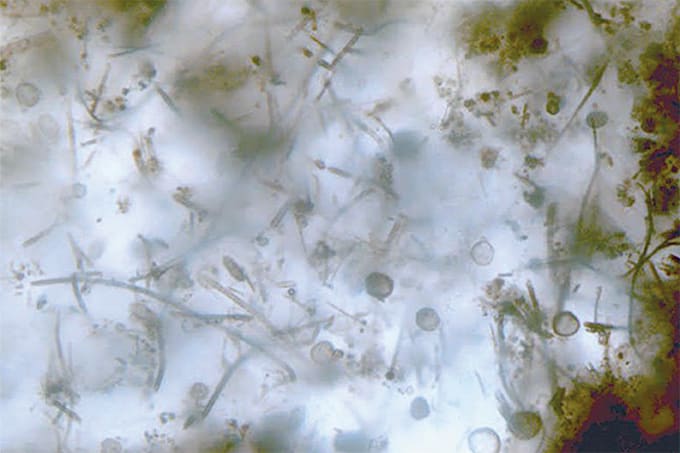
What is the current gold standard for detecting anabolic steroid doping? And what are its limitations?
The current gold standard for detecting anabolic steroids involve chromatographic separations (either gas or liquid chromatography) coupled to a triple quadrupole tandem mass spectrometer (MS/MS). These methods are highly selective and sensitive, which is why they’ve been used (and improved upon) over the last several decades. However, these methods are targeted, meaning they are developed to look for specific chemical compounds (such as those listed on WADA’s annual Prohibited List). As such, identification of “novel” or unknown substances can be more challenging, especially considering triple quad-based MS is a low-resolution MS technique.
Which emerging technologies might be able to overcome such limitations?
Advances in high-resolution mass spectrometry (time-of-flight, Orbitrap, FTICR, and so on) have allowed for routine molecular composition analysis, especially for small molecules, such as anabolic steroids. These accurate mass methods are capable of reliably measuring m/z to several decimal places and thus providing a confident molecular formula. Coupling these with various MS/MS fragmentation methods can also provide some structural information, but are challenged by stereochemical isomers. And that’s where ion mobility (IM) comes in. IM is a rapid gas-phase technique that separates ions based on differences in their size, shape, and charge; our group and others have shown this technique to be capable of resolving numerous isomers in mixtures (where even high-res MS fails). Its timescale allows straightforward coupling with current methods (for example, LC-IM-MS/MS) such that you can get all of the aforementioned data as well as the ion mobility-derived collision cross section (CCS). CCS is a representative property of an ion and can be used to help identify unknown compounds, especially when combined with computational modeling.
What are the main barriers to more widespread adoption?
There are three primary barriers, in my opinion; first, reduced quantitative performance; second, cost of implementation; and third, limited resolving power of most commercial instruments.
How is your work helping to overcome those barriers?
Our work has primarily focused on overcoming the first and third barriers.
Regarding the first barrier, we are implementing several strategies to improve the quantitative performance of LC-IM-MS techniques (1). In collaboration with Agilent Technologies, we are using multiplexed acquisition to increase our duty cycle (or ion utilization efficiency) from <10% to >50%. And that has resulted in improved sensitivity and limits of detection by approximately one order of magnitude. Agilent has also developed a high-resolution demultiplexing software that allows for post-data acquisition improvements to resolution. Finally, we are using structurally-selective derivatization methods that introduce a fixed charge onto our anabolic steroids, significantly improving the ionization efficiency and thus sensitivity.
To improve resolving power, we are also developing structurally-selective reactions. To date, we have published on alkene-specific reactions, including ozonolysis and the Paternò-Büchi reaction, and have recently submitted a paper focusing on carbonyl- and hydroxyl-specific reactions; the latter (derivatization by 1,1-carbonyldiimidazole) has resulted in significantly improved resolution of stereoisomers.
What other cutting-edge technologies could improve anti-doping analysis if they were more widely adopted?
The ability to definitively identify unknowns and/or long-term metabolites of known performance enhancing drugs is one of the current challenges in anti-doping. Although experimental strategies have considerably improved our capability, computational methods are also crucial to further progress. We currently collaborate with computational chemist Roberto Peverati and his group at Florida Institute of Technology to develop novel computational modeling strategies and machine learning algorithms in an effort to create a predictive database of potentially novel substances.
Should the analytical scientist’s responsibility go beyond simply measuring and providing the values?
Computational methods have also come a long way in predicting the biological effects of certain drugs. Our ability to do this for “novel” substances might allow us – in the future – to determine those compounds that will provide the greatest performance enhancing benefits and/or the greatest detriment to athletes’ short- and long-term health.
Christopher D. Chouinard is an Assistant Professor in the Department of Biomedical and Chemical Engineering and Sciences, Florida Institute of Technology, US
References
- DC Velosa et al., “Toward Routine Analysis of Anabolic Androgenic Steroids in Urine Using Ion Mobility-Mass Spectrometry”, J Am Soc Mass Spectrom (2022). DOI: doi.org/10.1021/jasms.1c00231




